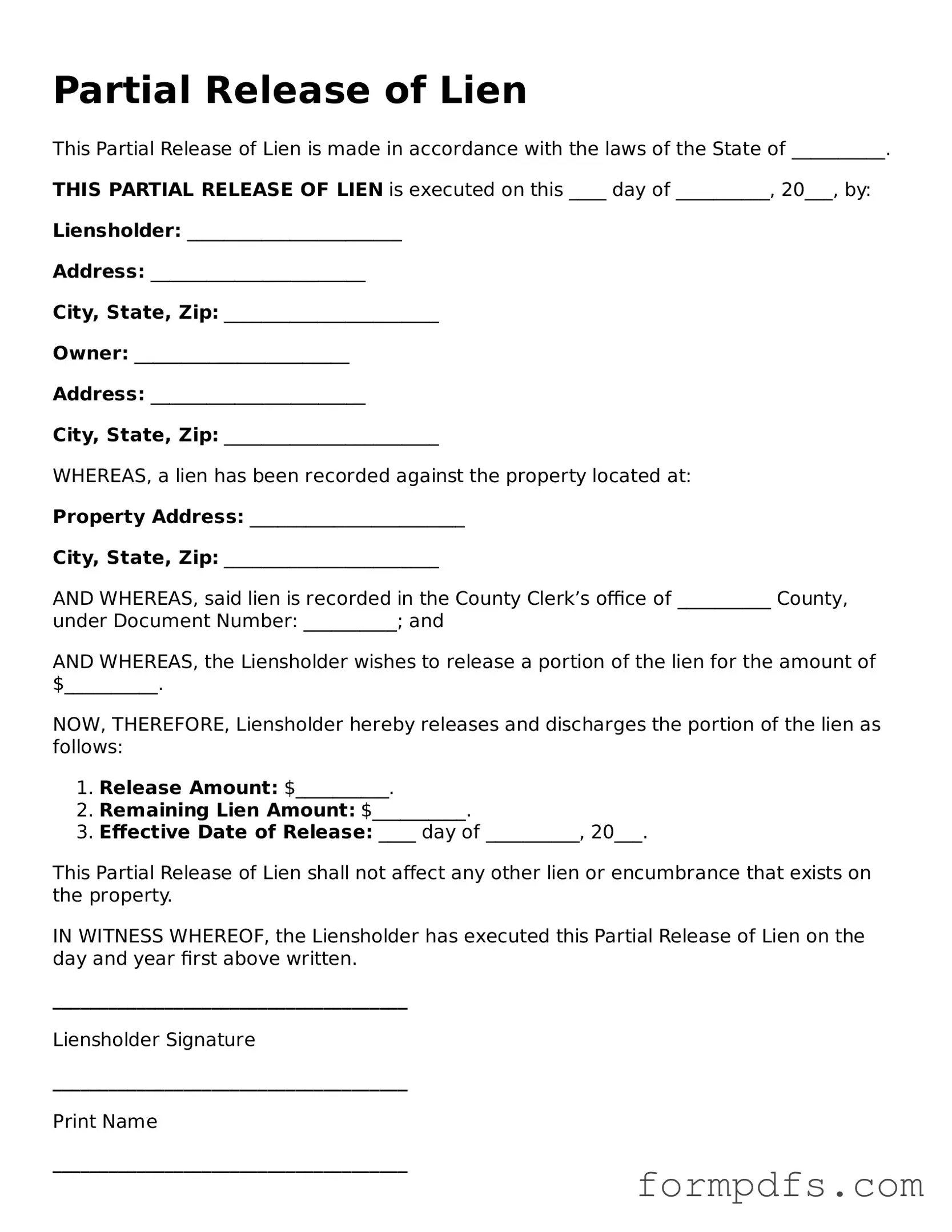What is a Partial Release of Lien form?
A Partial Release of Lien form is a legal document used to remove a lien from a specific portion of a property or a specific amount owed. This form is typically used in construction projects or real estate transactions where a contractor, subcontractor, or supplier has filed a lien for unpaid work or materials. By completing this form, the lien holder agrees to release their claim on the specified part of the property or the specified amount, while retaining their rights to the remaining balance or other parts of the property.
When should I use a Partial Release of Lien form?
This form is useful when a property owner has made partial payments for services or materials, and the lien holder is willing to release their claim on the paid portion. For example, if a contractor has completed part of the work and received payment for that work, a Partial Release of Lien can be filed to clear the lien for that completed portion, allowing the property owner to move forward without the full lien affecting the property.
Who needs to sign the Partial Release of Lien form?
The lien holder must sign the Partial Release of Lien form to officially release their claim. This could be a contractor, subcontractor, or supplier. Additionally, it is often advisable for the property owner to sign the form as well, acknowledging the release and confirming that the lien holder has received the agreed payment for the specified work or materials.
How do I fill out a Partial Release of Lien form?
To complete the form, start by providing the names and addresses of both the lien holder and the property owner. Clearly identify the property involved, including its legal description. Specify the amount being released and any remaining balance that is still subject to the lien. Finally, include the date and have the necessary parties sign the document. It's important to ensure all information is accurate to avoid potential disputes later.
Is a Partial Release of Lien form legally binding?
Yes, once signed by the appropriate parties, a Partial Release of Lien form is legally binding. It serves as proof that the lien holder has agreed to release their claim on the specified portion of the property or amount owed. However, it is advisable to file the form with the appropriate local government office to ensure it is officially recognized and to protect against future claims.
What happens if I do not file a Partial Release of Lien form?
If a Partial Release of Lien form is not filed, the lien remains in effect for the entire amount claimed. This can create complications for property owners when trying to sell or refinance the property. It may also lead to potential legal disputes if the lien holder continues to pursue the remaining balance. Filing the form is crucial for clearing the title and preventing future issues related to the lien.
